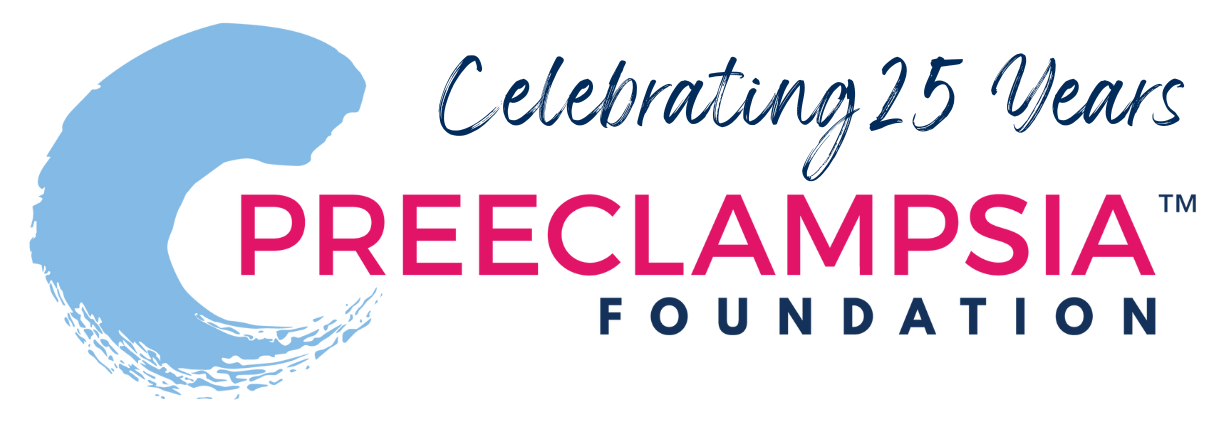
Can the Timing of Inflammatory Marker Testing Predict Preeclampsia Risk in Women with Obesity?
While the foundations of preeclampsia are believed to develop in the early stages of pregnancy, the current screening process occurs at 20 weeks, nearly half way through the second trimester. When clinical symptoms begin to appear, often after the second and into the third trimester, preterm delivery may be the only option. This delay in prognosis limits opportunities for prospective mothers and researchers to test therapies that may delay or prevent the condition. Without a reliable way to identify those at-risk early on, many women are subject to additional monitoring and intervention.
Current research has not yet identified specific inflammatory markers nor at which point in the pregnancy they can be useful for predicting preeclampsia. Pinpointing these biomarkers could determine their reliability as tools for identifying at-risk women early in pregnancy, such that measures can be taken to delay or prevent the onset of preeclampsia.
Researchers investigated 20 inflammatory markers across all trimesters in 37 participants with Class 2 obesity (women with a BMI over 35) who developed preeclampsia and 74 normotensive controls (patients with normal pregnancies). Participants were matched based on pregestational BMI, smoking status, and race. Analyses assessed marker levels by trimester, changes in marker levels between trimesters, and ratios of pro- to anti-inflammatory markers, and associations between marker levels and fetal sex.
Researchers found that higher levels of IFN-α across all trimesters were significantly associated with increased chances of developing preeclampsia. Inflammatory markers IL-4, IL-17A, IL-13, IL1-β, IFN-γ, and TNF-α, were significantly linked to the likelihood of developing preeclampsia in the first and second trimesters, while GM-CSF, IL1-α, IL10, IL12p70, IL-6, and IL-8 were significant only in the first trimester. MCP1 and IP10 were associated with risk of developing preeclampsia only in the third trimester. No significant associations were found for markers E-selectin, P-selectin, MIP1-α, or MIP1-β in any trimester. Changes in inflammatory markers across trimesters and interactions with fetal sex were not significant.
Currently, there are no interventions that successfully delay the onset of preeclampsia, but first-trimester risk identification can light the way for developing early, reliable screening tools as well as targeted interventions for at-risk pregnancies, particularly for women with Class 2 obesity.
Take Home Message: Testing for specific inflammatory marker levels in the first trimester, as well as the balance between pro-inflammatory and anti-inflammatory markers, were strongly associated with later development of preeclampsia in women with Class 2 obesity. This study lays the groundwork for future preventive strategies and therapies thanks to early risk identification.
While obesity remains a risk factor for preeclampsia, more research is needed to see if these patterns are the same for other patients. This includes people with a BMI under 25, those who have early-onset preeclampsia, and people from different races, ethnicities, and places around the world. Understanding who is at risk for preeclampsia is really important for doctors, researchers, patients, and families. By accurately identifying those at high risk, we can improve medical care and help improve outcomes for both mothers and their babies.
Citation: McKenzie K. Jancsura, Nathan P. Helsabeck, Cindy M. Anderson, Yvette P. Conley, Carl A. Hubel & James M. Roberts (2025) Identifying the timing and type of inflammatory markers for potential prediction of preeclampsia in women with obesity, Hypertension in Pregnancy, 44:1, 2492084, DOI: 10.1080/10641955.2025.2492084
Link: https://doi.org/10.1080/10641955.2025.2492084
About Research Roundup
Each quarter, our team of science writers reviews the most current research studies related to hypertensive disorders of pregnancy and summarizes those studies of greatest interest and potential impact to our community, including research studies related to risk assessment, diagnosis, prevention, and treatment. Special thanks to our volunteer research team including Dr. Sig-Linda Jacobson, Dr. Jennifer Mitchell, Dr. Julie Reynolds, Amanda Yang, and Simren Gupta who make Research Roundup possible, and to our Patient Advisory Council, who reviews these materials from the patient perspective.
Related Articles

Your story is needed to improve outcomes for moms like you. Add your voice to critical preeclampsia research to ensure that every story is heard.

Frequently asked questions about the Preeclampsia Registry, a patient-driven registry and biobank.

The Preeclampsia Foundation offers research funding, study recruitment, and other patient engagement services to researchers.

We provide research grant funding to advance progress towards detection, prevention, or treatment of preeclampsia, HELLP syndrome, and other hypertensive disorders of pregnancy.

Shattered Expectations: What happens after the unexpected? You may have received the unexpected news that you have preeclampsia or another hypertensive disorder of pregnancy. Maybe labor complic...

Research suggests that preeclampsia may develop in a two-stage process. The first stage involves challenges to the way that the placenta implants and grows. In a normal pregnancy, a type of placental...

The risk of developing hypertension and cardiovascular disease (CVD) significantly increases for patients who experience gestational hypertension, preeclampsia, or other hypertensive disorders of preg...

Cerebral complications from preeclampsia and eclampsia are a major cause of maternal mortality and long-term neurological impact. Understanding pathophysiology (changes in how the body works as a resu...

The Preeclampsia Foundation is seeking Letters of Intent for the Peter Joseph Pappas Research Grants funding program, designed to accelerate preeclampsia research. The ultimate goal of this grant prog...



